After four days getting enriched by sixteenth and seventeenth century exploitation in Quito, we all disembarked for eight days of evolutionary discovery on islands where iguanas swim and fish fly.
Oh what wondrous life we would see.
Some feet red and some feet blue, some that swam and others they flew.… one such flew five thousand miles to meet us on Isabela island for its annual mating season. The world’s largest seabird, that is – the waved albatross, which nests nowhere else in the world and never touches land for the first five years of its life. Three kinds of boobies nesting and raising young chicks. There were tropical penguins, killer orcas. Rainbow-colored crabs named Sally Lightfoot. Sea lions, sea turtles, gigantic tortoises and spectacular thieving frigate birds disguised as batman while in the sky, clowns holding big red balloons while in their nests.
 Nesting pair of waved albatross
Nesting pair of waved albatross
Hundreds of Galapagos sharks, up to 10 feet long, even crashed the party one night for several hours. They surrounded our boat in an ominous scene, lurking there for the next flying fish to be attracted to our boats’ lights and go thwack against the hull and fall back into the waiting fracus of sharks. Our hearts sank as we watched in fascinated horror as the sharks tumbled over one another in their frenzy for the now stunned fish. The thump-splash drew groans from the attending audience on deck, and cheers arose when a fish flew away from the boat to its freedom — notwithstanding a few of the contrarian smart alecs aboard.
We generally had two excursions per day which consisted of loading about fourteen people onto a zodiac boat and cruising to a landing or snorkeling destination. On one of the last days we were exploring a beautiful white organic sand beach; meaning, it is composed of digested coral thanks to the coral-eating parrotfish. While watching the marine iguanas crawl back onto this beautiful digested coral, I barely spotted a huge fin not thirty meters from the shore and very near a volcanic rocky jetty. At first I yelped out, only to have the inevitable question posed, “Are you sure you saw a fin?” Steeped in half-remembrances and self-doubt and feeling deflated, I was about to answer, “No… probably not” when there it was again only it had moved off a few hundred meters. It was that of a huge male orca, which was making a quick scan of the bay we were in. The few swimmers we had in our group were quickly pulled from the water. We watched in awe as the massive fin rose and fell, getting closer and closer to shore like the incoming tide, while his mate stayed out to sea quite a bit further. Finding nothing of interest to eat, we watched him depart to rejoin his mate.
 The giant tortoise, today only found in the wild in the Galapagos and on one of the Seychelles islands
The giant tortoise, today only found in the wild in the Galapagos and on one of the Seychelles islands
Other days we were treated with a variety of different rays. We saw huge, 6 foot sting rays while we were snorkeling, one even chased me away! Thirty golden rays all swimming in formation around and under our zodiac. Six spotted eagle rays were spotted as well from the boat. They were fascinating to watch as they are both majestic and spellbinding. Other than the one that was chasing me, of course.
 We saw thousands of Sally Lightfoot crabs
We saw thousands of Sally Lightfoot crabs
 Great (or magnificent?) frigate birds playing batman…
Great (or magnificent?) frigate birds playing batman…
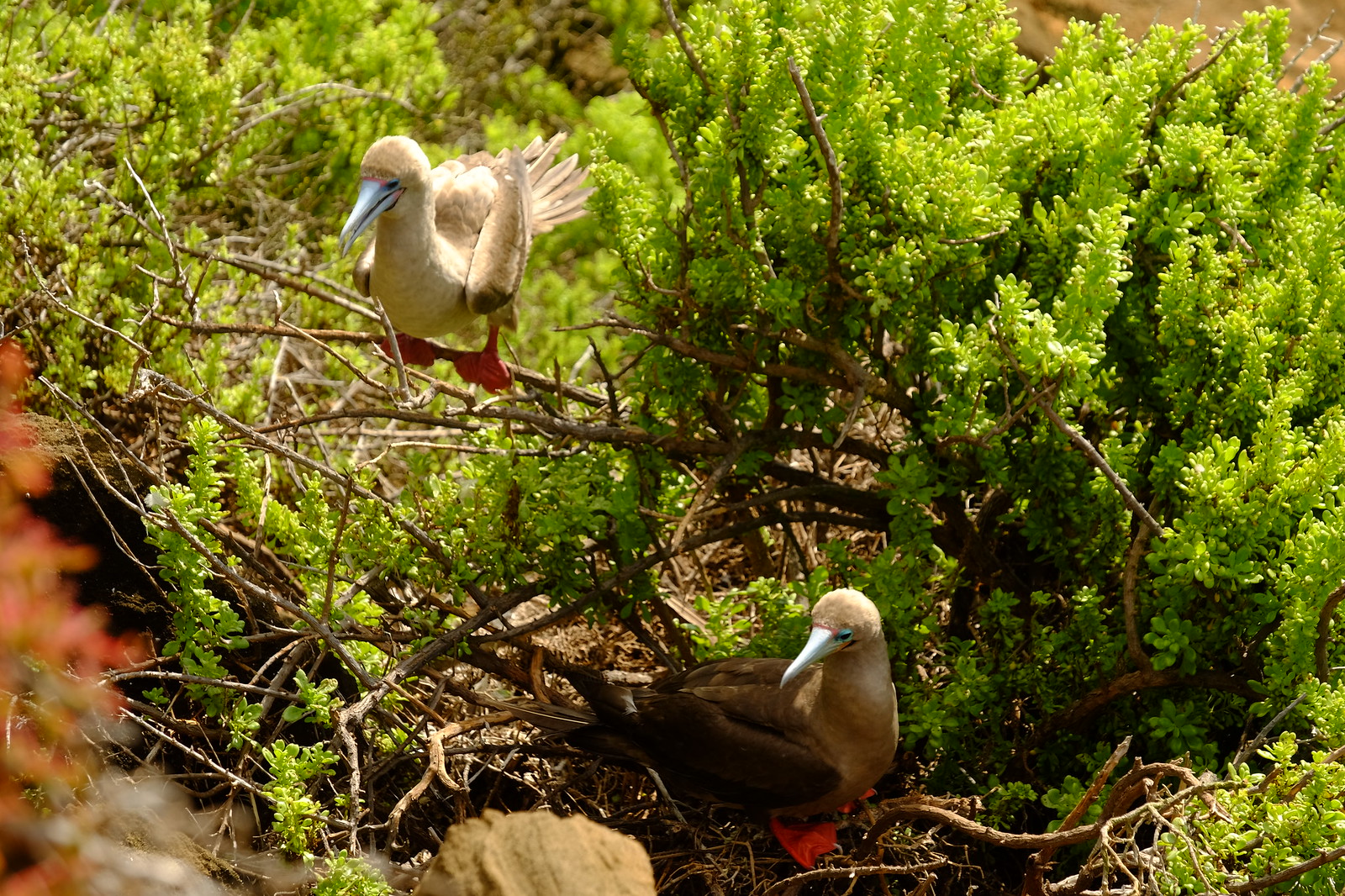








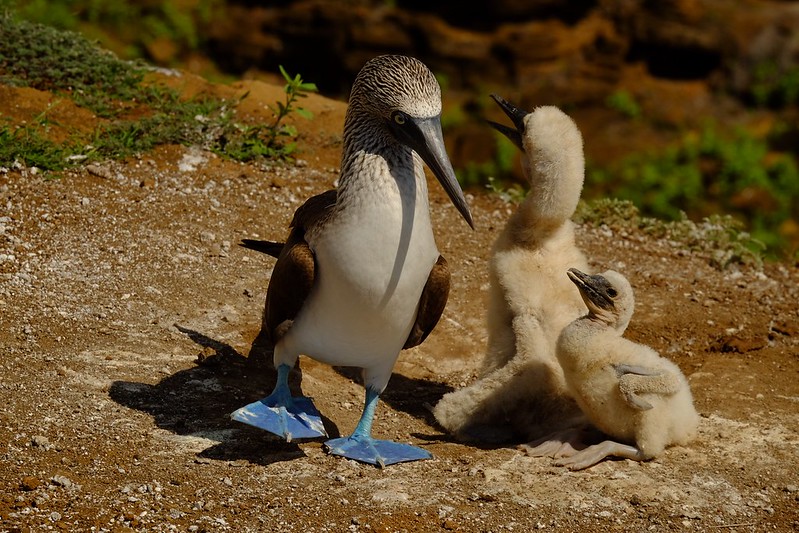

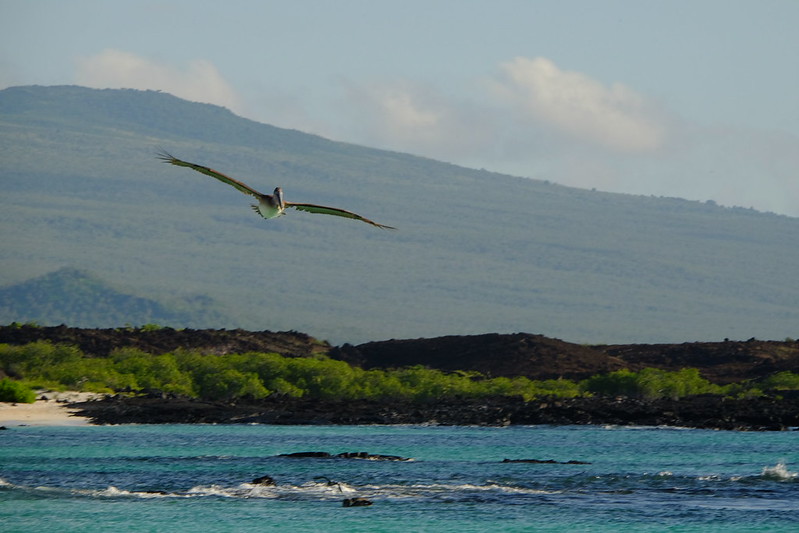






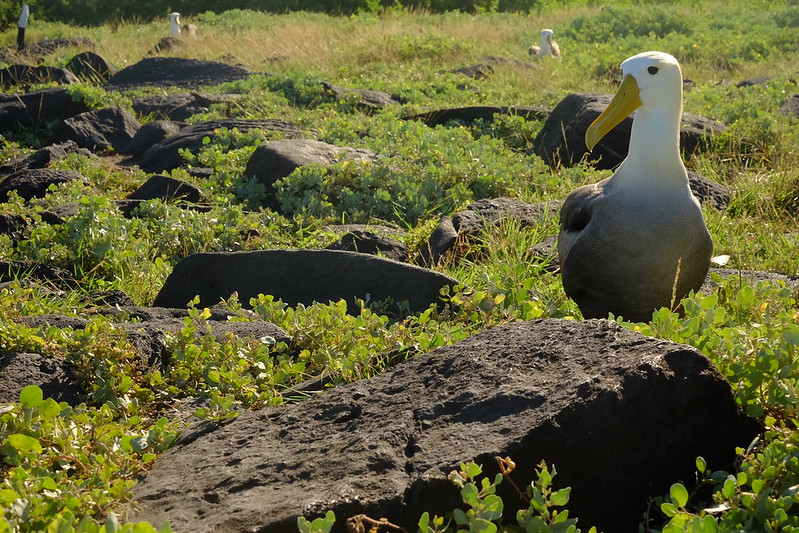




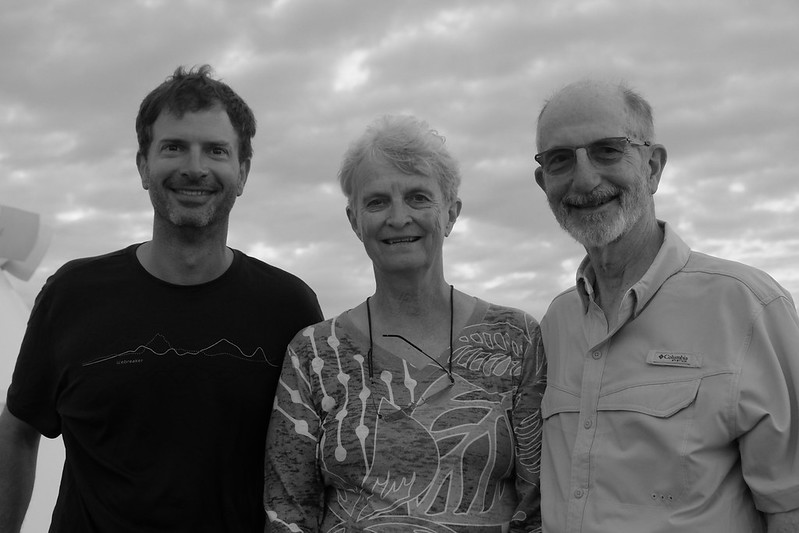
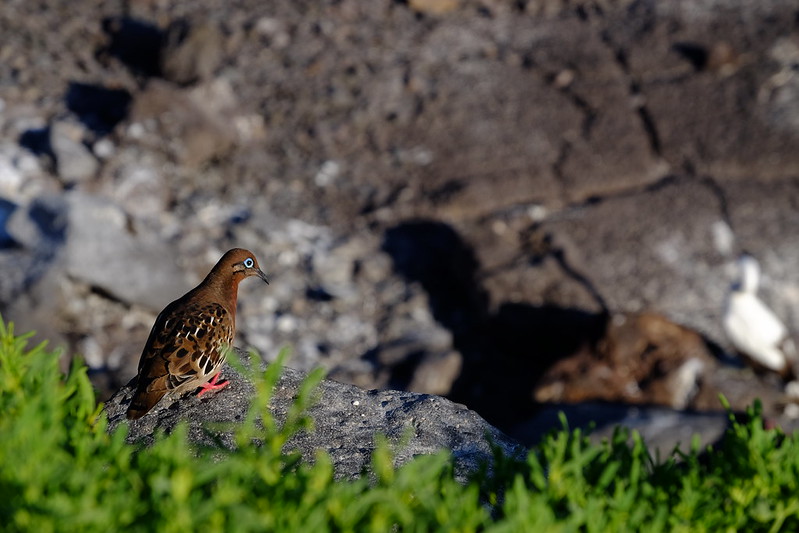


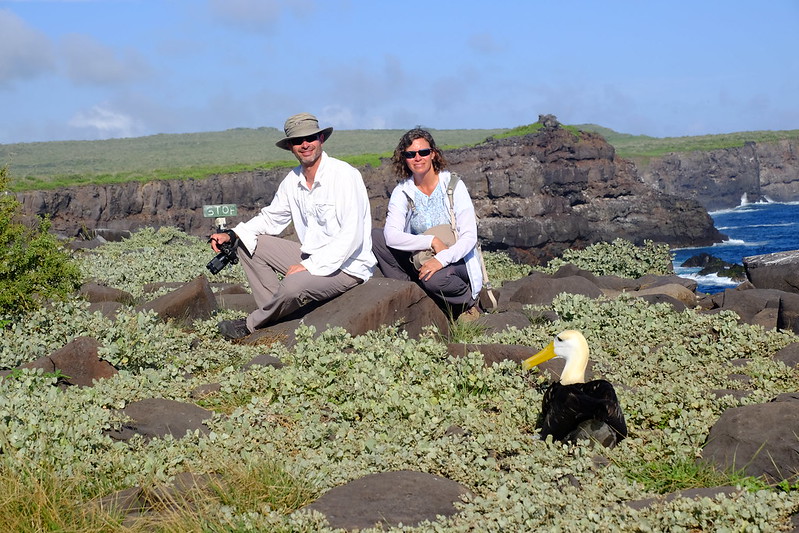







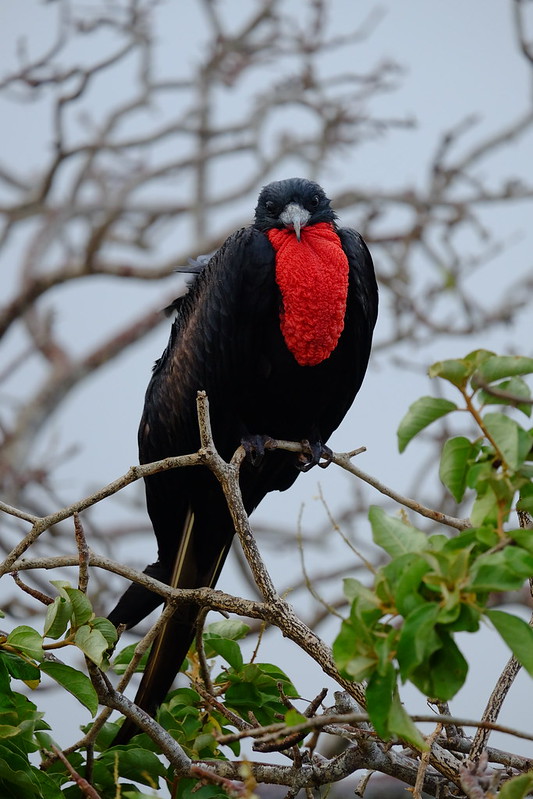



3 replies